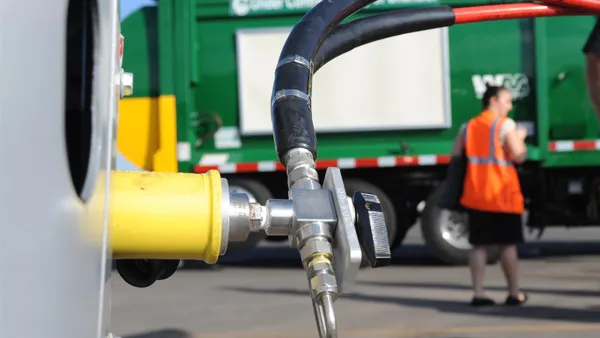Dive Brief:
- Former senator and Republican presidential candidate Rick Santorum is touring Tennessee towns this week to pitch waste-to-energy (WTE) initiatives on behalf of Connecticut-based VikingPeak Energy, as reported by The Leaf-Chronicle.
- Santorum spoke specifically to officials in Bi-County, which serves Montgomery and Stewart counties, about its lack of landfill space and fiscal challenges associated with waste management. He told Bi-County that a shift to WTE practices — including landfill mining — would reduce landfill dependency by 90% and make the community more attractive to sustainable businesses.
- According to The Leaf-Chronicle, VikingPeak's WTE model extracts recyclables prior to processing, generates zero emissions and would utilize a 20,000-square-foot facility.
Dive Insight:
While Santorum is no longer a political representative, it is intriguing to hear a public figure with a Republican background supporting such "green" initiatives. He told the Bi-County Solid Waste Board that harvesting coal as an energy source is "a waste," which is a stance that is greatly contrasted by Republican figures like president-elect Donald Trump, who has vowed to "revive" the coal industry.
Part of Santorum's push toward WTE practices is inspired by the success that Europe has seen with such practices. Santorum even claims that VikingPeak's WTE capabilities can produce fuel with twice as much BTU content as Europe's fuel. Using technology from Ecogensus, the company says it can create a fuel for use in industrial coal boilers and coal ash plants to convert them to alternative energy sources.
VikingPeak announced its first agreement with a material recovery facility in Hartford, CT earlier this year and still appears to be in the early stages like other refuse-derived fuel projects. As seen with the Fiberight project in Maine and elsewhere it can be difficult to sell people on the idea of new technology at first. Though because the climate for new combustion facilities is still somewhat unfavorable and communities want solutions for landfill diversion, there could be room for more waste-to-energy ideas like this in the future.










